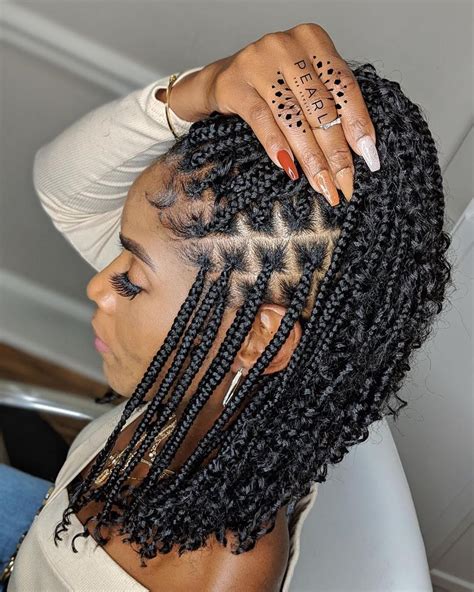Braiding is a versatile and beautiful way to style your hair, whether you’re looking for a protective style or simply a change of pace. But when it comes to choosing the right human hair for braiding, there are a few things you need to keep in mind. Not all human hair is created equal, and some types are better suited for braiding than others.

In this article, we’ll discuss the different types of human hair available for braiding and help you choose the best option for your needs. We’ll also provide a step-by-step guide on how to braid your hair, and offer some tips on how to avoid common mistakes.
There are three main types of human hair available for braiding:
- Virgin hair is unprocessed hair that has never been chemically treated or colored. It is the most expensive type of human hair, but it is also the highest quality. Virgin hair is strong and durable, and it will last longer than other types of hair.
- Remy hair is hair that has been cut from a single donor and has not been chemically treated. It is slightly less expensive than virgin hair, but it is still high quality. Remy hair is strong and durable, and it will blend well with your natural hair.
- Non-Remy hair is hair that has been collected from multiple donors and may have been chemically treated. It is the least expensive type of human hair, but it is also the lowest quality. Non-Remy hair is not as strong or durable as virgin or Remy hair, and it may not blend well with your natural hair.
When choosing human hair for braiding, there are a few things you need to keep in mind:
- The length of your hair: The longer your hair, the more hair you will need to braid.
- The thickness of your hair: The thicker your hair, the more hair you will need to braid.
- The type of braid you want: Different types of braids require different amounts of hair. For example, a cornrow braid requires more hair than a French braid.
- The color of your hair: You can choose human hair that matches your natural hair color, or you can choose a different color to add a pop of color to your style.
- Brush your hair: Brush your hair to remove any tangles or knots.
- Divide your hair: Divide your hair into two equal sections.
- Start braiding: Take a small section of hair from the left side and cross it over the middle section. Then, take a small section of hair from the right side and cross it over the middle section. Continue braiding until you reach the end of your hair.
- Secure the braid: Tie the end of the braid with a hair elastic.
- Don’t braid your hair too tightly: Braiding your hair too tightly can cause damage and breakage.
- Don’t braid your hair when it’s wet: Braiding your hair when it’s wet can cause frizz and breakage.
- Don’t leave your braids in for too long: Leaving your braids in for too long can cause tangles and mats.
Pros:
- Braiding your hair can protect it from damage.
- Braiding your hair can add length and volume to your hair.
- Braiding your hair can be a fun and creative way to style your hair.
Cons:
- Braiding your hair can be time-consuming.
- Braiding your hair can be uncomfortable if it’s done too tightly.
- Braiding your hair can cause tangles and mats if it’s left in for too long.
Braiding is a versatile and beautiful way to style your hair. By following the tips in this article, you can choose the best human hair for braiding and avoid common mistakes. With a little practice, you can master the art of braiding and create beautiful, long-lasting styles.
- If you’re new to braiding, start with a simple braid like a three-strand braid.
- Once you’ve mastered the basics, you can try more complex braids like French braids or cornrow braids.
- There are many resources available online and in libraries that can help you learn how to braid your hair.
- If you’re not comfortable braiding your hair yourself, you can ask a friend or family member to help you.
| Type of Hair | Quality | Cost | Durability | Blends Well with Natural Hair |
|---|---|---|---|---|
| Virgin hair | High | High | High | Yes |
| Remy hair | High | Medium | Medium | Yes |
| Non-Remy hair | Low | Low | Low | No |
| Factor | Considerations |
|---|---|
| Length of hair | The longer your hair, the more hair you will need to braid. |
| Thickness of hair | The thicker your hair, the more hair you will need to braid. |
| Type of braid | Different types of braids require different amounts of hair. |
| Color of hair | You can choose human hair that matches your natural hair color, or you can choose a different color to add a pop of color to your style. |
| Pros | Cons |
|---|---|
| Protects hair from damage | Can be time-consuming |
| Adds length and volume to hair | Can be uncomfortable if done too tightly |
| Can be a fun and creative way to style hair | Can cause tangles and mats if left in for too long |
| Mistake | How to Avoid |
|---|---|
| Braiding hair too tightly | Braid hair loosely to avoid damage and breakage. |
| Braiding hair when it’s wet | Braid hair when it’s dry to avoid frizz and breakage. |
| Leaving braids in for too long | Remove braids after a few days to avoid tangles and mats. |
